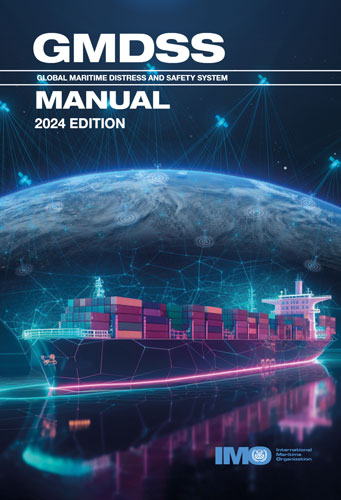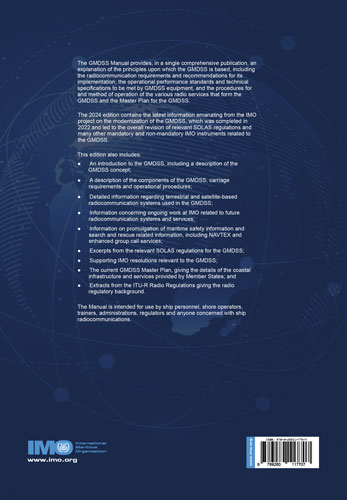Сб с 10 до 16
GMDSS Manual. Global Maritime Distress and Safety System/Руководство ГМССБ. Глобальная морская система связи при бедствии и обеспечения безопасности
Книга на английском языке
Since entry into force of its Convention in 1958, the International Maritime Organization (IMO) and its Member States, in dose cooperation with the International Telecommunication Union (ITU) and with other international organization, notably the International Civil Aviation Organization (ICAO), the World Meteorological Organization (WMO), the International Hydrographic Organization (IHO), the International Mobile Satellite Organization (IMSO) and with the Cospas-Sarsat partners, have continued to improve maritime distress and safety radiocommunications.
A major milestone achieved in this work was the lull implementation of the global maritime distress and safety system (GMDSS) on 1 February 1999. More recently, a comprehensive review and modernization of the GMD5S has been completed at die 105th session of the IMO Maritime Safety Committee (MSC). by adopting amendments to the 1974 SOLAS Convention, including related and consequential amendment* to other existing instruments, for their entry into force on 1 January 2024.
This publication replaces the 2019 edition of die GMDSS Manual and provides significant updates to the information contained in die previous edition, including the maps illustrating the information available in the Master Plan of shore-based facilities for GMDSS.
This manual presents consolidated information concerning the GMDSS along with a detailed description of its founding principles. In addition, the manual contains substantial information with respect to radiocommunication requirements and recommendations, performance standards and technical specifications for GMDSS equipment, and operational procedures for die use of various radio services that are part of the GMDSS. The manual also explains important changes emanating from the review and modernization of the GMDSS.
См. также предыдущие издания GMDSS manual (Global maritime distress and safety system) и GMDSS manual (Global maritime distress and safety system) 17 edition/ Руководство по ГМССБ
Contents
Foreword
Abbreviations
Part 1 Introduction
Part 2 Basic concept of the GMDSS
2.1 General
2.2 SOLAS chapter IV - Radiocommunications
2.3 Search and rescue
2.4 Sea areas
2.5 Functional requirement tor radiocommunications
Part 3 Communications systems and equipment used in the GMDSS
3.1 Introduction
3.2 Terrestrial communications
3.3 Satellite-based communications
Part 4 Maritime safety information and SAR-related information
4.1 Introduction
4.2 International NAVTEX service
4.3 High frequency narrow-hand direct printing
4.4 International enhanced group call service
4.5 MSI-related documentation
Part 5 Operational procedures for the GMDSS
Part 6 Other operational and administrative matters
6.1 GMDSS equipment carriage requirements
6.2 Equipment performance standards
6.3 Operation in polar waters
6.4 Maintenance of equipment in the GMDSS
6.5 Radio personnel
6.6 Station identities
6.7 Frequencies used in the GMDSS
6.8 GMDSS Master Plan
Part 7 Search and rescue (SAR)
7.1 General
7.2 Shore-based SAR communication network
7.3 SAR procedures in response to the reception of distress alerts
Part 8 Non-GMDSS communications systems
8.1 Introduction
8.2 Automatic identification system
8.3 Ship security alert system
8.4 Long-range identification and tracking
Part 9 Ongoing work at IMO
9.1 Introduction
9.2 Implementation of the BeiDou Message Service System
9.3 Interoperability and interconnectivity between recognized mobile satellite services
9.4 Revision of resolution A.1001(25)
9.5 Development of performance standards for NAVDAT
9.6 Introduction of VHF data exchange system
9.7 Further development of the e-navigation concept
9.8 Development of f goal-based instrument for maritime autonomous surface ships
Annex 1 GMDSS Master Man
Annex 2 Regulations of the 1974 SOLAS Convention relevant to the GMDSS
Annex 3 IMO instruments relevant to the GMDSS
Annex 4 ITU instrument* relevant to the GMDSS




